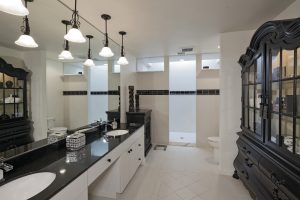 When the winter months are upon us, heat is a non-negotiable expense as we want to do everything we can to keep our homes comfortable and warm. There are several different heating systems a home-owner or landlord can have like forced-air ducts, steam radiators, and baseboard heat to name a few. Radiant systems are another system that many eco- and cost-conscious consumers are seeing as a more favorable option to effectively supply heat throughout their home.
When the winter months are upon us, heat is a non-negotiable expense as we want to do everything we can to keep our homes comfortable and warm. There are several different heating systems a home-owner or landlord can have like forced-air ducts, steam radiators, and baseboard heat to name a few. Radiant systems are another system that many eco- and cost-conscious consumers are seeing as a more favorable option to effectively supply heat throughout their home.
What are radiant systems?
A radiant system supplies heat directly through the floor, walls or ceiling of a house by heating adjacent air indirectly. The heat is transferred via a system that is laid beneath the surface and radiates heat into the room. In contrast, other systems are convective systems meaning they circulate air through a finite space.
How do radiant systems work?
The Department of Energy explains that there are three (3) types of radiant heat: air-heated, electric and hydronic. The first system, the air-heated system is the least used system, as air doesn’t hold a large amount of heat, so this isn’t very cost effective. Electric radiant heat is made up of electric cables built into the surface or an electrically conductive plastic mat. These types of systems make the most sense to use in a bathroom, where a small amount of space needs to be heated. Additionally, radiant systems that have been placed under ceramic tile will help prevent that tile from cracking. The last type of radiant heat is a hydronic or liquid system. These are the most popular and cost-effective systems. Hydronic systems use heated water that is pumped from a boiler through a tube that has been laid in a patter under the surface.
What are the benefits of radiant systems?
There are several benefits to having a radiant heating system installed in your home. The first is the potential to lower your utility bills. The hydronic system is the most cost-effective, as water does not lose heat as quickly as air and constant energy isn’t needed to keep the warmth, as it is with electric.
A radiant system does not require ductwork, so if you are installing it after the fact, there will be no additional ductwork needed. This is great for small spaces or spaces with limited access. This also could reduce the amount of maintenance needed to keep your system in tip-top shape. Additionally, when there is no duct-work, there is no need for registers, returns or vents. This will free up more floor space to arrange furniture and storage.
With a radiant heating system, the system doesn’t make use of blowing air to warm a room. This is a great way to cut down on the spread of fine particles like dust, pet dander, and allergens. Also, not relying on blowing the air, you are able to receive a more even and uniform heat source.
While radiant heating is a great source of heat, it may not be for every room in your home, especially if it’s a pre-existing home. We do feel that radiant heat is a comfort that is hands down amazing for the bathroom, walk-in closet or other smaller rooms in your home.
If you would like more information on radiant heat or to schedule a consult, please contact our office – 301-401-2780

























